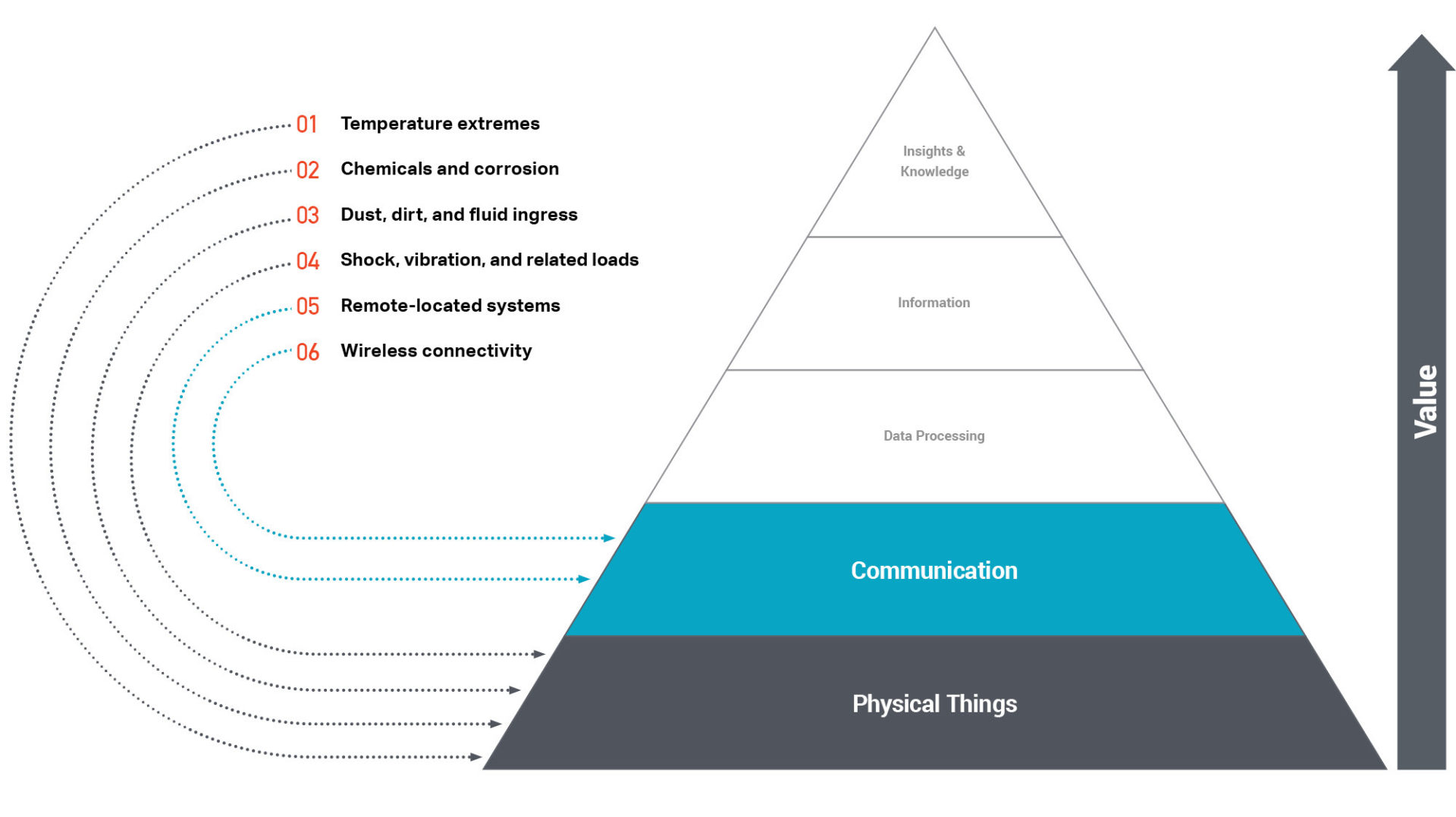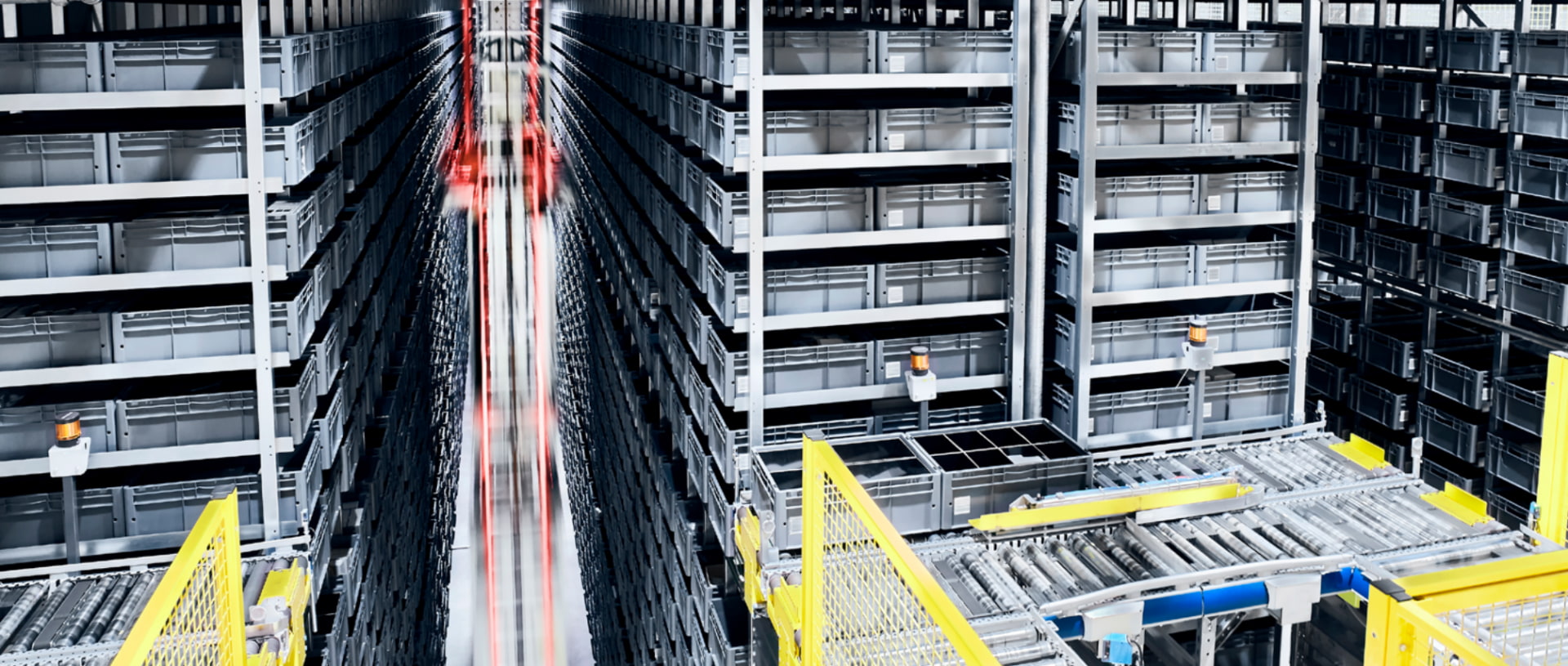Additional contributions to this series made by: Ian Graves, Bret Richmond, & Mike Schaaf

IoT systems need to be able to communicate the data collected effectively, to allow for processing and insights to be generated. In many cases, this is through wireless communication, which can be challenging in environments that are particularly electromagnetically noisy, or not conducive to wireless communication. Even wired communication of data can be disrupted by very challenging radiative environments.

WIRELESS PRODUCT DEVELOPMENT CONDITIONS
There are a number of different factors that can contribute to challenging radiative environments within product development, but they broadly fall into 2 categories.
Noisy Environments
Electronically noisy environments are challenging to operate in, as the signal can be swamped by electromagnetic noise. This noise can come from several sources, from other electronic components to high voltage power lines, to the radiation present in space.
Radiative Environments
Wireless communication is challenging in environments where the path between the antennae communicating is convoluted, or blocked. This can be found in applications communicating close to the human body, such as a wearable communicating to a mobile phone. Industrial environments, with significant barriers between the sensor location and the receiver, are also challenging, especially when the barriers are electrically conductive.
DESIGNING FOR CHALLENGING WIRELESS COMMUNICATION ENVIRONMENTS
When designing for challenging environments, you can follow a typical process to ensure a successful outcome for the product.
1) Characterize the Environment and the Link Budget
The first step is to characterize the environment, to understand the conditions that the product is required to function in. This could be by using known experimental results or verified simulation models but often requires some testing to get a comprehensive understanding of the environment.
By understanding the environment, and the system architecture, the team can build a link budget, predict the radio frequency link margin, and start to inform design decisions.
2) Simulation and Design Iteration
Simulation is used extensively in design, to allow for many iterations of design options to be considered and to predict the performance of the product. We have extensive simulation capabilities, to allow us to simulate antenna performance, propagation of the electromagnetic waves in the environment, and the impact of different materials in the product.
The main outcome of the simulations is to predict the link margin, which is used to determine if design changes are required, and to predict the reliability of the radio frequency communications.
3) Prototype and Test
Always prototype and test the performance before moving to a production design. This allows us to verify the performance predicted by the simulation and allows the simulation parameters to be adjusted to match the experimental performance of the products.
Specifically, the Received Signal Strength Indicator (RSSI) will be measured in testing, to confirm the radio frequency link margin, by comparing it with the radio sensitivity. Design iterations often follow the testing of initial prototypes, to fix any identified issues, and to optimize the performance for the final product.
4) Certification and Regulatory Requirements
The final piece to the wireless device puzzle is certification. Often, use cases that involve more challenging environments need to be understood early in the design process as they can create requirements for electrical or mechanical designs and drive certification requirements prior to sale.
These requirements typically center around the safety of the device in the environment where it is operating. For example, certain IoT devices need to operate in environments with flammable dusts or explosive gases and must be designed to ensure that no sparks can be generated.
Additionally, many IoT devices used in industrial environments are required to be UL listed (or equivalent) to ensure the device has been designed so that it will be safe across the full range of operating temperature conditions and under a range of fault conditions. As a design engineer, this can drive a huge range of considerations such as proper fusing, maintaining safe touch temps for plastics or metals, and selecting plastics for enclosures with proper flammability ratings.

